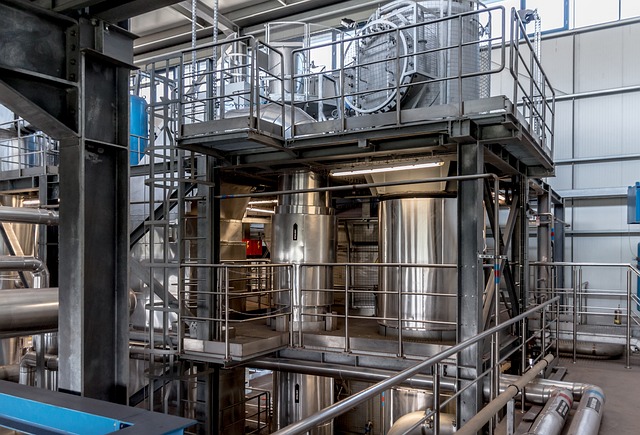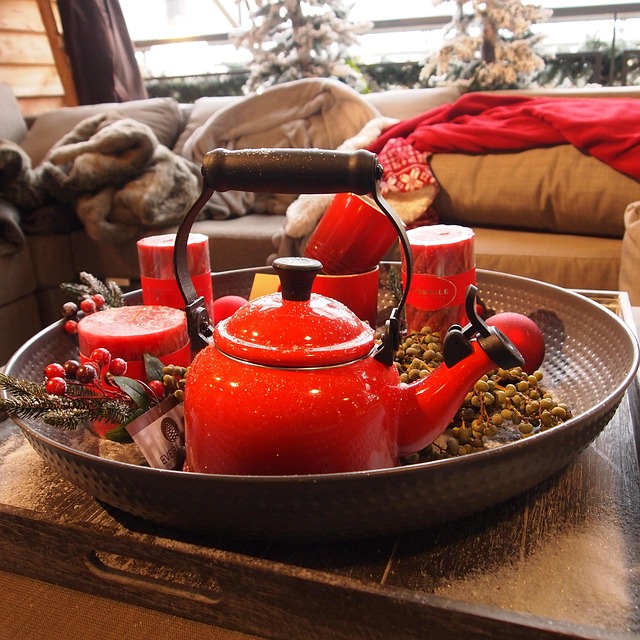Boiler pressure readings between 12-15 bar are normal. Deviations signal potential issues like leaks, fuel problems, or faulty safety valves. Regular monitoring prevents low/high pressure events. Follow manufacturer guidelines for pressure reset to restore optimal performance. Inspect pipes and fittings for leaks, especially in older systems. Examine burner operation, fuel supply, and safety valves for damage or misalignment. Set safety valves at recommended pressure levels to prevent complications. Timely maintenance and repairs are crucial for boiler system health.
Identifying boiler pressure issues is crucial for maintaining efficient heating systems. This guide outlines essential steps to diagnose common boiler pressure problems, ensuring optimal performance and safety. From understanding normal pressure readings to inspecting leaks and examining safety valves, each step empowers homeowners and technicians to quickly pinpoint causes. By following these actions, you can resolve pressure-related issues effectively, enhancing the longevity of your boiler system.
- Understand Boiler Pressure Readings and Normal Ranges
- Inspect for Leaks in Pipes and Fittings
- Check Burner Operation and Fuel Supply
- Examine Safety Valves and Pressure Relief Mechanisms
Understand Boiler Pressure Readings and Normal Ranges

Boiler pressure readings are a crucial indicator of the system’s performance and safety. Understanding normal ranges is essential for identifying potential boiler pressure problems. Commercial boilers typically operate within a specific pressure range, often between 12-15 bar (or psi). Any significant deviation from this norm could signal an issue. For instance, low boiler pressure might be caused by leaks or inadequate heating fuel supply, while high pressure can result from faulty safety valves or overloading the system.
Regular monitoring of these readings is vital for preventing low boiler pressure in commercial settings. Knowing the right pressure levels and what constitutes a normal range allows for prompt diagnosis when problems arise. Boiler pressure problem diagnosis involves comparing current readings against established norms and identifying any unusual fluctuations. If the issue persists, it may be necessary to follow boiler pressure reset instructions as per the manufacturer’s guidelines to restore optimal performance and prevent further complications.
Inspect for Leaks in Pipes and Fittings

One of the primary steps in diagnosing any boiler pressure issue is to meticulously inspect all pipes and fittings for leaks. Leaks can cause significant pressure drops, leading to inefficient operation or even complete failure of the system. Regular maintenance checks should include a thorough review of these components, especially in older systems where corrosion and wear are more prevalent. Identifying and repairing leaks promptly not only helps maintain optimal boiler pressure levels but also prevents further damage and costly repairs.
For homeowners with old boilers, understanding the signs of potential leakages is crucial. High and low boiler pressure fluctuations can be indicative of a leaking pipe or fitting. By staying vigilant and addressing these issues early, you can avoid more serious boiler pressure problems in the future. Regular maintenance and quick response to any unusual pressure changes are key to keeping your system running smoothly.
Check Burner Operation and Fuel Supply

One of the primary steps in diagnosing a boiler pressure issue is to thoroughly check the burner operation and fuel supply. A malfunction in either of these areas can lead to low or fluctuating boiler pressure, resulting in inefficient heating and potential safety hazards.
Start by inspecting the burner for any signs of damage, improper alignment, or faulty components. Ensure that the fuel supply lines are secure, unblocked, and delivering the correct fuel pressure as per the manufacturer’s specifications. Monitoring these factors can help identify potential causes of low boiler pressure, such as blocked air filters, worn-out burners, or inadequate fuel pressure regulation, thereby guiding the next steps in troubleshooting and preventing further complications in commercial settings.
Examine Safety Valves and Pressure Relief Mechanisms

When diagnosing boiler pressure issues, examining safety valves and pressure relief mechanisms is a crucial step. These components play a vital role in maintaining safe operating conditions by releasing excess pressure to prevent damage or potential hazards. Regularly check for any signs of wear, corrosion, or improper functioning. Ensure that the safety valves are set at the appropriate pressure levels as per manufacturer recommendations.
Moreover, understanding how to check boiler pressure regularly is essential for preventing low boiler pressure in commercial settings. A low-pressure problem can indicate issues with heating elements, water level controls, or leaks in the system. Referring to a low boiler pressure repair guide can help in diagnosing and rectifying these issues promptly. Regular maintenance and timely repairs are key to ensuring optimal performance and safety of your boiler system.
Diagnosing boiler pressure issues requires a systematic approach, from understanding pressure readings to inspecting for leaks and examining safety valves. By following these steps, you can efficiently pinpoint and address boiler pressure problems, ensuring optimal performance and safety. Remember, regular maintenance and prompt action on potential issues are key to preventing major disruptions in your heating systems.
